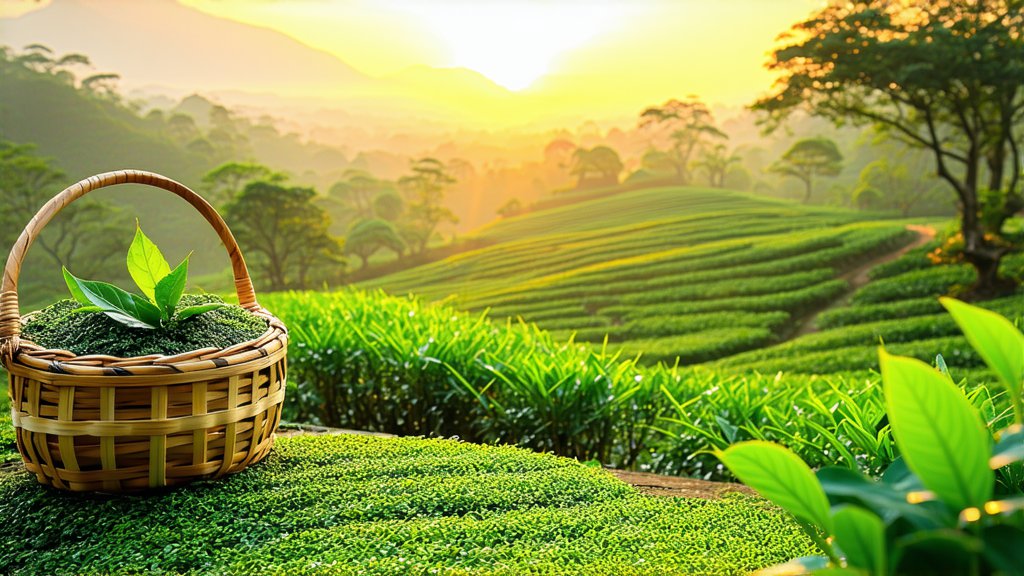
In the heart of China's Zhejiang province lies the picturesque West Lake, renowned not only for its breathtaking scenery but also as the birthplace of one of the most celebrated green teas in the world—Dragon Well Tea, or Longjing (龙井) in Chinese. This exquisite beverage has captivated tea connoisseurs globally for centuries, owing to its unique flavor profile, delicate appearance, and the meticulous craftsmanship involved in its production. Join us on a journey through time and taste as we explore the history, varieties, intricate manufacturing process, and art of appreciating Dragon Well Tea.
A Legacy Brewed in Legend
The origins of Dragon Well Tea are steeped in myth and legend. According to one tale, during the Qingming Festival (around April 5th), the emperor of the Eastern Jin Dynasty (265-420 AD) was visiting a temple near West Lake when he encountered a dragon that requested his help in finding water. The grateful dragon then showed the emperor a spring from which pure water gushed forth, and it is said that the first Dragon Well Tea bushes were planted beside this very spring. While the story may be apocryphal, the association with dragons—symbolizing power, strength, and good fortune in Chinese culture—adds an enchanting mystique to this esteemed tea.
Historical records indicate that Dragon Well Tea gained prominence during the Tang Dynasty (618-907 AD) and reached its zenith during the Ming (1368-1644) and Qing (1644-1912) dynasties. It became a favorite among Chinese literati and intellectuals who praised its qualities in poetry and prose, further elevating its status as a symbol of refinement and elegance.
Varietals and Characteristics
Dragon Well Tea primarily consists of two main varieties: Xihu Longjing (West Lake Dragon Well) and Non-Xihu Longjing. The former refers to tea grown within the designated West Lake region, whereas the latter encompasses teas produced in surrounding areas that mimic the characteristics of the original. Among these, Lu'an Guapiao from Anhui province and Bi Luo Chun from Jiangsu province are notable examples that share similarities with Dragon Well but possess their own distinct identities.
What sets Dragon Well apart is its flat, spear-like leaves, reminiscent of the shape of a dragon's tongue or well water rippling under a stone—hence the name "Dragon Well." The color ranges from vibrant emerald green to a more muted olive hue, depending on the grade and roasting level. High-quality Dragon Well exhibits a glossy sheen and a uniform size and shape, indicative of careful handpicking and processing.
The Art of Craftsmanship
The magic of Dragon Well Tea lies not just in its ingredients but also in the traditional methods employed to transform fresh leaves into a masterpiece. The process involves several stages:
-
Picking: Only the youngest shoots and leaves, typically the bud and the first two leaves, are harvested. This usually occurs in early spring, particularly around Qingming and before the start of summer (Grain Rain), ensuring optimal freshness and tenderness.
-
Withering: Freshly picked leaves are spread thinly on bamboo trays or mats under shade to lose moisture gradually. This step helps soften the cell walls, making them more pliable for shaping.
-
Fixation (Pan-firing): Unlike other Chinese green teas that may be steamed or baked, Dragon Well Tea undergoes a unique process called pan-firing. Skilled tea masters toss the withered leaves in a heated wok or pan over high heat, using quick hand movements to prevent burning while simultaneously removing excess moisture and fixing the tea's green color and aroma. This stage requires immense precision and experience.
-
Shaping: Following fixation, the tea is shaped by hand or machine into its characteristic flat form. In the traditional method, artisans use techniques passed down through generations to mold each leaf individually, a labor-intensive process that contributes to the tea's premium quality.
-
Drying: Finally, the shaped leaves are dried further to reduce moisture content to about 5-6%, ensuring longevity without compromising flavor.
Savoring the Essence of Dragon Well
To truly appreciate Dragon Well Tea, one must engage all senses in a ritualistic manner akin to an art form. Here’s a guide to savoring this elixir:
-
Warm the Teaware: Begin by warming your teapot and cups with hot water to maintain the tea's temperature during brewing and enhance aroma release.
-
Measure the Leaves: For every 150ml of water, use approximately 3-4 grams of Dragon Well Tea leaves. Adjust according to personal preference for stronger or milder flavors.
-
Infusion: Pour water heated to around 80°C (176°F) over the leaves, allowing them to unfurl gracefully. Avoid boiling water as it can scorch the delicate leaves.
-
Steep Time: Let the first infusion steep for about 1-2 minutes. Subsequent infusions can be extended slightly as desired. Dragon Well Tea is known for its ability to produce multiple pleasing infusions, each revealing different facets of its character.
-
Observe and Sip: Admire the bright yellow-green liquor against the backdrop of the flattened leaves dancing in the cup. Inhale deeply to catch the subtle chestnut aroma, often described as sweet and nutty with hints of floral notes. Take small sips, allowing the tea to coat your palate fully before swallowing, savoring the smooth texture and slightly sweet aftertaste that lingers.
In conclusion, Dragon Well Tea is more than just a beverage; it embodies centuries of cultural heritage, artisanal skill, and a deep connection to nature. Its enduring popularity among tea enthusiasts worldwide speaks volumes about its exceptional quality and timeless appeal. Whether you're a seasoned tea drinker or new to the world of Chinese green teas, exploring Dragon Well Tea is an invitation to embark on a sensory adventure that transcends borders and generations.